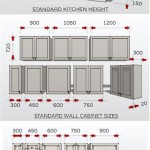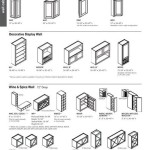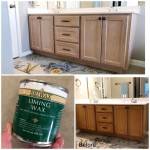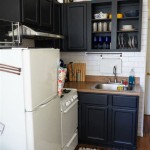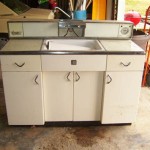Can You Wax Painted Kitchen Cabinets? A Comprehensive Guide
The question of whether or not to wax painted kitchen cabinets is a common one, often arising from a desire to protect the paint, enhance the sheen, or simplify cleaning. Waxing furniture, including cabinets, has a long history, and proponents often cite its ability to create a protective layer and impart a desirable aesthetic. However, the suitability of wax for painted kitchen cabinets depends on several factors, including the type of paint used, the intended purpose of the wax application, and the properties of the wax itself. This article will explore these factors in detail, providing a comprehensive understanding of the potential benefits and drawbacks of waxing painted kitchen cabinets.
Before delving into the specifics of waxing, it’s important to understand the nature of paint used on kitchen cabinets. Modern kitchen cabinets are typically finished with a variety of paints, including latex, acrylic, oil-based, and enamel. Each of these paint types has distinct characteristics regarding durability, sheen, and porosity. Latex and acrylic paints, known for their water-based composition, are generally porous and flexible. Oil-based paints, while more durable, have become less common due to environmental concerns and longer drying times. Enamel paints, often oil-based or alkyd-based, offer a hard, glossy finish that is resistant to chipping and scratching. The type of paint on your cabinets directly impacts how it will react to wax application.
Wax itself also comes in various forms. Paste wax, typically made from beeswax, carnauba wax, and solvents, is a common choice for wood furniture. Liquid waxes, often containing silicones or polymers, offer easier application but may not provide the same level of protection. Microcrystalline waxes, known for their flexibility and adhesive properties, are often used in conservation to protect delicate surfaces. Understanding the composition and properties of different wax types is crucial for making an informed decision about whether or not to wax your painted cabinets.
Understanding the Potential Benefits of Waxing
The primary motivation for waxing painted kitchen cabinets is often protection. A layer of wax can act as a barrier against moisture, dirt, and minor scratches. This is particularly relevant in the kitchen environment, where cabinets are frequently exposed to spills, grease, and abrasive cleaning products. The wax layer can prevent these substances from directly contacting and potentially damaging the paint surface.
Another potential benefit is the enhancement of sheen. While some paints already have a glossy finish, others may benefit from the added luster that wax can provide. Paste wax, in particular, can be buffed to a high shine, creating a more luxurious and aesthetically pleasing appearance. This is especially true for cabinets finished with matte or satin paints, which may lack the desired level of reflectivity.
Ease of cleaning is another factor often cited in favor of waxing. A waxed surface is typically smoother and less porous than an un-waxed painted surface. This makes it easier to wipe away spills and dirt, preventing them from penetrating the paint and causing stains. The wax layer acts as a sacrificial barrier, protecting the underlying paint from the harsh effects of cleaning chemicals and abrasion.
Potential Drawbacks and Considerations
Despite the potential benefits, waxing painted kitchen cabinets also presents several drawbacks that must be carefully considered. The most significant concern is the potential for incompatibility between the wax and the paint. Some waxes, particularly those containing strong solvents, can soften or dissolve certain types of paint, leading to irreversible damage. This is especially true for latex and acrylic paints, which are more susceptible to solvent-based products.
Another issue is the potential for wax buildup. Over time, repeated applications of wax can create a thick, uneven layer that dulls the finish and attracts dirt. Removing this buildup can be a challenging and time-consuming process, often requiring the use of harsh chemicals that can further damage the paint. Moreover, the buildup can create a sticky surface that is difficult to clean and may even trap moisture, leading to mildew growth.
The reversibility of the waxing process is also a crucial consideration. Once wax has been applied, it can be difficult to remove completely. Even with specialized wax removers, some residue may remain embedded in the paint, affecting its adhesion and appearance. This can be problematic if you later decide to repaint the cabinets, as the wax residue can interfere with the new paint's ability to bond properly.
Factors Influencing the Suitability of Waxing
Several factors influence whether or not waxing is appropriate for your painted kitchen cabinets. The type of paint used is paramount. As mentioned earlier, latex and acrylic paints are generally less compatible with solvent-based waxes than oil-based or enamel paints. Always consult the paint manufacturer's recommendations before applying any type of wax or sealant. A test area in an inconspicuous location is also highly recommended to assess the compatibility of the wax and the paint.
The age and condition of the paint are also important considerations. Older paint, particularly if it is already cracked or peeling, may be more susceptible to damage from wax application. Similarly, if the paint is already showing signs of wear and tear, waxing may not be an effective solution and could even exacerbate the problem. In such cases, repainting the cabinets may be a more appropriate course of action.
The desired level of sheen and protection should also be taken into account. If the cabinets already have a high-gloss finish and are well-protected, waxing may not be necessary. Conversely, if the cabinets are subject to heavy use and exposure to moisture and grease, a carefully chosen wax may provide added protection. However, it's important to weigh the potential benefits against the risks of damage and buildup.
Furthermore, the intended use of the kitchen cabinets plays a significant role. Cabinets that are frequently used for food preparation or storage may require more frequent cleaning and protection than those used for less demanding purposes. In such cases, it is crucial to choose a wax that is food-safe and easy to clean. Consider waxes specifically formulated for kitchen environments that offer resistance to grease and spills.
The application technique is also crucial. Applying too much wax or failing to buff it properly can result in a cloudy, uneven finish. It is essential to follow the manufacturer's instructions carefully and use the appropriate tools, such as a soft cloth or buffer, to ensure a smooth and even application. Avoid using abrasive cleaners or harsh chemicals, as they can damage the wax layer and the underlying paint.
Finally, consider alternative protective measures. Instead of waxing, you could consider using a polyurethane sealant or a clear coat specifically designed for painted surfaces. These products typically offer better protection and durability than wax, and they are less likely to cause damage or buildup. However, it is still important to choose a product that is compatible with the paint and to test it in an inconspicuous area before applying it to the entire surface.
In summary, while waxing painted kitchen cabinets can offer some benefits in terms of protection, sheen enhancement, and ease of cleaning, it also presents potential drawbacks such as incompatibility with certain paint types, wax buildup, and difficulty of removal. Carefully consider the type of paint on your cabinets, the properties of the wax you intend to use, and the potential risks before proceeding. Thorough preparation, proper application techniques, and ongoing maintenance are essential for achieving the desired results and avoiding irreversible damage. Always prioritize testing in an inconspicuous area and consulting with paint and finish professionals when in doubt.

Chalk Painted Kitchen Cabinets Two Years Later Our Storied Home

Adding Dimension To Kitchen Cabinets With Annie Sloan Soft Wax Diy Makeover Painting White

Step By Kitchen Cabinet Painting With Annie Sloan Chalk Paint Jeanne Oliver

Chalk Painted Kitchen Cabinets Two Years Later Our Storied Home

Why I Repainted My Chalk Painted Cabinets Sincerely Sara D Home Decor Diy Projects

My Chalk Painted Cabinets 4 Years Later How Did They Do Artsy Rule

Step By Kitchen Cabinet Painting With Annie Sloan Chalk Paint Jeanne Oliver

Wax Vs Lacquer On Kitchen Cabinets The Purple Painted Lady

Painting Kitchen Cabinets With Chalk Paint Simply Today Life

Do Your Kitchen Cabinets Look Tired The Purple Painted Lady
Related Posts

